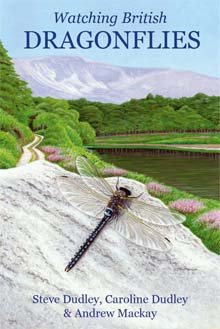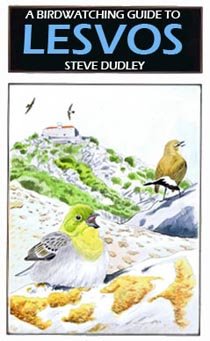SHETLAND - BIRDING
Day two of my Shetland & Orkney trip for Speyside Wildlife with fellow guide Ray Nowicki.
Guests: Liz, Chris, Joan, June, Daphne & David , Mary & John , Margaret & Terry.
We wake to an overcast sky with dark, threatening clouds in the west. Conversation over breakfast centres round most peoples’ first experience of the Simmer Din – 24 hour daylight!
Departure was delayed waiting for hot flasks to take with us, so we arrive at Toft for our ferry with only minutes to spare. No time for terminal birding and looking for Otters, it was straight onboard and onwards to Yell. The short crossing was calm with birds to look at in every direction. Our first sight of all the auks including quite close Black Guillemots (Tysties), Fulmars (Maalies), Shags (Scarfs) and many Gannets (Solan Geese) including several in full dive. Fantastic!
We drive straight across Yell aiming for our next ferry. The only deviation is when Steve is certain he glimpsed an Otter rolling just offshore in a voe below the main road. A side road just in the right place takes us down to a very convenient quay from which to search the shoreline. No Otter, but a really close Tystie and two Grey Seals out in the voe. Ray’s van chance in on a Shetland Wren (Robbie Cuddue or Speyside’s own preferred name of Scurry Mousie!) perched on a fence along the side road.
We arrive at Gutcher in plenty of time for the ferry so can spend some time searching the shoreline. House Sparrows and Pied Wagtails bob around the old quay while a large flock of Arctic Terns are sat loafing on a pool behind the Post Office. A couple of Rock Pipits are busy bouncing around the rocks (where else?) and two Red-throated Divers are feeding in the sheltered bay, 'snorkelling' with heads in the water before sliding underr in pursuit of their quarry.
A beach on a nearby island is covered in Shags which take to the water in unison. But not all are Shags. Two birds head back to the beach with as mall group of Shags and are clearly larger – Cormorants. A couple of Arctic Skuas (Skooty Allans) wheel about in the middle distance and a Golden Plover is found wandering among the sheep. Bonxies are ever present patrolling the mini cliffs on which Fulmars are breeding. Just before we get on the ferry three Red-breasted Mergansers (Herald) land in the bay giving us excellent views.
The 25 minute ferry crossing to Fetlar gives us more and even better views of all the auks and more Gannets diving headlong in to the sea. We arrive on Fetlar and driving across the island we pick up a whole host of roadside goodies including Hooded Crow, Wheatear (Steyne Chakker), a lone Golden Plover (Plivver) and a couple of Rock Doves. As we approach Funzie we pass the strangely named planticrubs, circular stone structures built to provide shelter for crops.
Arriving at Loch of Funzie (pronounced Finnie) a couple of Red-necked Phalaropes take off from the loch as we pull up. We are soon out of the vans and searching the loch. No phalaropes. One, two, no three Red-throated Divers were along the far shore where a large group of Arctic Terns was loafing on the pebble beach. The fact that we were finding so many groups of terns jut loafing around was a sure sign of yet another failed year due to lack of Sandeels. A single summer-plumaged Dunlin (Plivver’s Page) was bathing in the loch edge near the terns and a lone adult Kittiwake drifted across the loch and landed among the terns. Bonxies and Great Black-backed Gulls (Swaarbies) regularly floated over on the lookout for food and three Swallows zig-zagged by.
The northerly wind was biting so we retreated to the vans for a hot drink before wandering down to the hide overlooking the Mires of Funzie. As we approached Ray and Steve spot a small bird on one of the pools. ‘Phalarope’ they announce and quickly get scopes on to it. We each get a look at this male bird through the scope before quickly moving on to the hide. When we get there the male is feeding in the reed edge right in front us. “He’s lovely,” comments Daphne, whilst various “wows”, “fantastic” and “crackin’!” are also muttered. Steve and Ray explain about the reverse plumage and roles of the sexes in phalaropes, and about the history of the site, and how, by the 1980s the mires had dried out, and the RSPB had since restored them to attract breeding phalaropes.
Unusually someone was wandering around the mires being mobbed by up to three phalaropes. Carrying a ‘bird bag’ he was clearly a ringer and after a short while he seemed to concentrate his efforts on one area, bent down picked up something before sitting down. He had obviously found some young phalaropes and was now ringing them. During this, at least one male and a female came on to the pools right in front of us giving us brilliant views. The birds mobbing the ringer were making contact at times, before he turned and left the marsh. He came in to the hide to explain what he was doing and that he had successfully found and ringed two phalarope chicks, and they were from one of three nests they had on the marsh this year.
The mires held other interest too – Snipe, Redshank, Mallard and a brilliant ginger-headed Shetland Bee. An Arctic Skua causes commotion when it drifts over the mires trying to locate young waders to dine on. Two Redshanks are soon on to it and drive it off.
With hunger getting the better of us, we make our way back to the vans. On the way come across a blotchy young Wheatear along the fence line and see another Shetland Bee.
With one place just as exposed as the other on Fetlar, we drive up to the old airstrip for lunch. During lunch we are entertained by a pair of dark-phase Arctic Skuas wheeling around over the moor – synchronised flying at its best! Lunch over we move the vans along the airstrip to view the shallow valley and loch.
There are two Red-throated Divers on the water when suddenly everything takes up from the moor as a Bonxies comes over low. Two Whimbrel and a pair of Curlew are immediately attacking this big brown brute. Dunlin are heard but not seen, and as the Bonxie is driven off, birds begin to drift back to their respective areas, allowing us to follow one of the two Whimbrel back to earth. Scopes are soon trained on to this smaller cousin of the Curlew and we can see its much shorter, all dark bill. Whilst watching it stood alert in the rough grass, at least one young can be seen creeping around near it.
After a visit to the quay for loos, we head over to Tresta beach. Another loafing group of Arctic Terns on the beach holds a single Common Tern and we are able to do a side-by-side comparison of these two similar species. Around 40 Bonxies are spread out between the beach and a ‘bathing club’ on the edge of the nearby freshwater loch. A family of Ringed Plovers run around the beach below us, and are joined by a couple of Dunlin. In the voe there is Tystie, Eiders and Razorbills, and the hundreds of Fulmars are dotted around the grassy cliffs which rise high out of the voe.
Ray picks up a distant summer plumaged Great Northern Diver. Although distant we can still see its large size, thick black neck and head and white chest gleaming above the surface of the sea. We watch it for quite a long time as it drift slowly closer towards us, but when it begins to feed, it spends longs periods underwater and disappears behind the headland.
A pale phase Arctic Skua streaks past us and makes a bee-line for the terns. The whole flock rise from the beach and there are terns everywhere as the skua begins harrying them in the hope one has prey. They don’t and it loses interest and drifts off. A Shetland Wren sings from a nearby garden when ‘tu-tu-tu-tu-tu-tu-tu’ is heard. “Whimbrel” Steve and Ray announce simultaneously. We eventually pick up the bird, calling continuously, heading straight for them from the west and it passes directly overhead.
We get back to Oddsta in good time for the ferry, but we are packed on to the small ferry like sardines so we can’t get out to enjoy the sea views. It’s straight across Yell and on to the Toft ferry and before we know it we are back at the hotel.
We enjoy a sumptuous dinner before heading back to our rooms to get ready for our evening trip to Mousa. After such a cold day, it’s going to be a night to wrap up warm and get as many layers as possible on. Chris isn’t taking any chances, and informs us that she will be OK as “I’ve got my pyjamas on under all this lot!”.
At 10.30pm we are back in the vans and heading south across Mainland to meet up with Tom Jamieson, skipper of the Solan IV, the Mousa ferry. At 11.00pm we leave the quay and speed across the sound to the small island of Mousa. We land and take the 20 minute walk to the broch. The boulder beaches by the broch are bursting into life, with the churring and hiccupping sounds of Storm Petrels (Alamooties). At the broch some climb to the top of this 2000-year structure. It’s a fascinating place, and to think that ancient Man shared the building with Storm Petrels – wonderful! By the entrance, Tom Jamieson has located a sitting Stormie and using a torch with a special filter, illuminates the hole for us all to look in to. What a fantastic sight! A wee Stormie just sitting there on its single egg.
We spend the next hour or so watching the Stormies coming in to the broch and the nearby boulder beach. Birds whizz round at all heights, fluttering at their nest holes before disappearing inside. One bird keeps returning to one spot for over 10 minutes, seemingly fluttering nowhere near a nest hole! It gives us very good views though. In the half-light Snipe continue to drum and the odd gull patrols the coast in search of a slow returning Stormie to snack on.
We reluctantly drag ourselves away from the spectacle and head back to the bat and return to the hotel – at 2.00am! Still- it’s a late breakfast in the morning.
Subscribe to:
Post Comments (Atom)









No comments:
Post a Comment